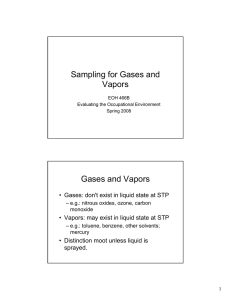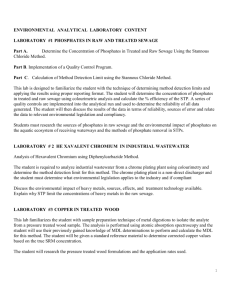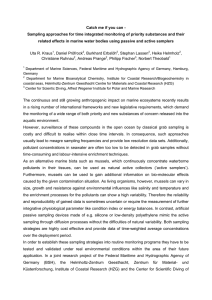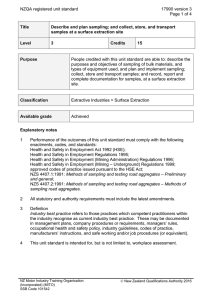A Health and Safety Reminder - the Teifi Rivers Invertebrate Monitors
advertisement
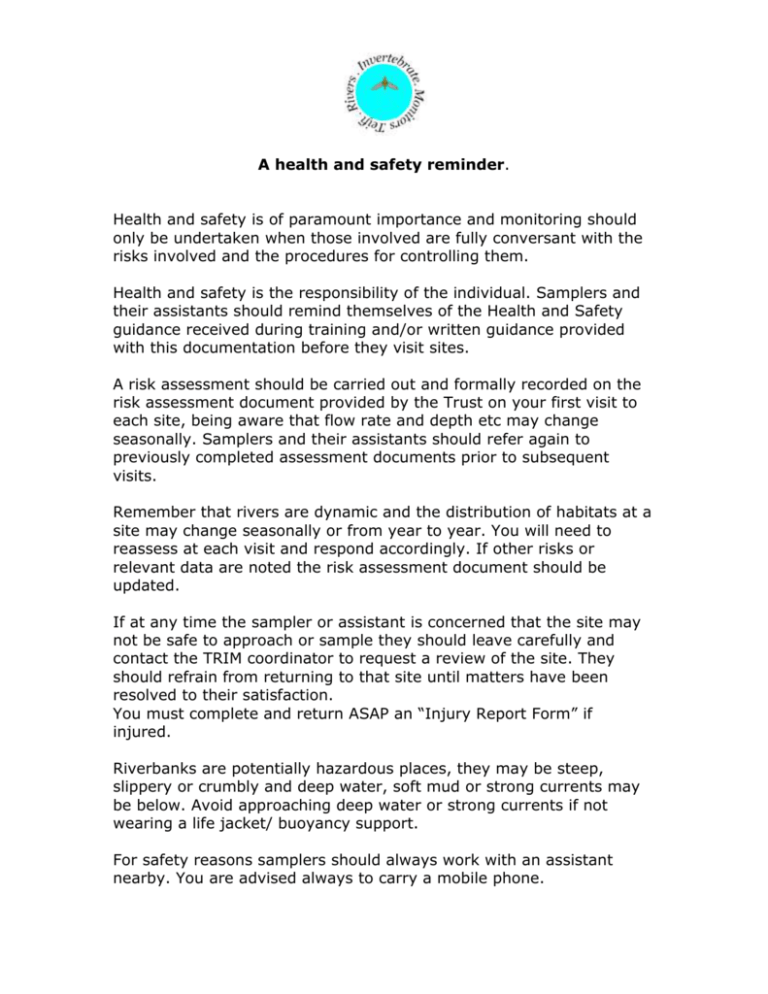
A health and safety reminder. Health and safety is of paramount importance and monitoring should only be undertaken when those involved are fully conversant with the risks involved and the procedures for controlling them. Health and safety is the responsibility of the individual. Samplers and their assistants should remind themselves of the Health and Safety guidance received during training and/or written guidance provided with this documentation before they visit sites. A risk assessment should be carried out and formally recorded on the risk assessment document provided by the Trust on your first visit to each site, being aware that flow rate and depth etc may change seasonally. Samplers and their assistants should refer again to previously completed assessment documents prior to subsequent visits. Remember that rivers are dynamic and the distribution of habitats at a site may change seasonally or from year to year. You will need to reassess at each visit and respond accordingly. If other risks or relevant data are noted the risk assessment document should be updated. If at any time the sampler or assistant is concerned that the site may not be safe to approach or sample they should leave carefully and contact the TRIM coordinator to request a review of the site. They should refrain from returning to that site until matters have been resolved to their satisfaction. You must complete and return ASAP an “Injury Report Form” if injured. Riverbanks are potentially hazardous places, they may be steep, slippery or crumbly and deep water, soft mud or strong currents may be below. Avoid approaching deep water or strong currents if not wearing a life jacket/ buoyancy support. For safety reasons samplers should always work with an assistant nearby. You are advised always to carry a mobile phone. Before entering the water check the area with a staff or the long handle of your net to ensure that the substrate is stable. When wading always have one foot firmly on the bed before moving the other. Never wade deeper than your knees when sampling. Remember that Environment Agency staff wear life jackets if in water above knee depth. Beware of sharp and cumbersome debris on the riverbed, and changes in current strength and sudden changes in depth. Check the weather forecast each time before sampling. Be aware that some water levels rise quickly. Never work in a spate. Be aware of biological hazards such as Weil`s disease (Leptospirosis) from rat urine, Lyme disease from sheep ticks, tetanus, and faecal coli forms from livestock. (For details see Health and Safety Guidelines document provided) Be aware of pollution hazards and of discharge points upstream e.g. if there are CSO`s (combined sewage overflows) upstream that you suspect are releasing sewage into the river you should (if you decide that you still wish to sample) use waterproof disposable gloves. You should disinfect equipment and waders after sampling or place them in polythene bags to avoid contamination until they can be disinfected. If raw sewage is visible you should leave the sampling work to the professionals. If in doubt about any Health and Safety issue do not take any risks. Contact your Monitoring Group Coordinator or the Trust Secretary who will seek advice on your behalf if you wish. You are now required to sign the registration document provided to confirm that you wish to sample river invertebrates on behalf of the Trust. Your name and contact details can then be forwarded to a Rivers Trust officer to ensure that insurance cover (no fee for you) is in place.



